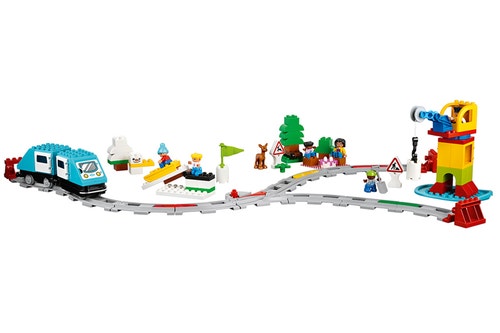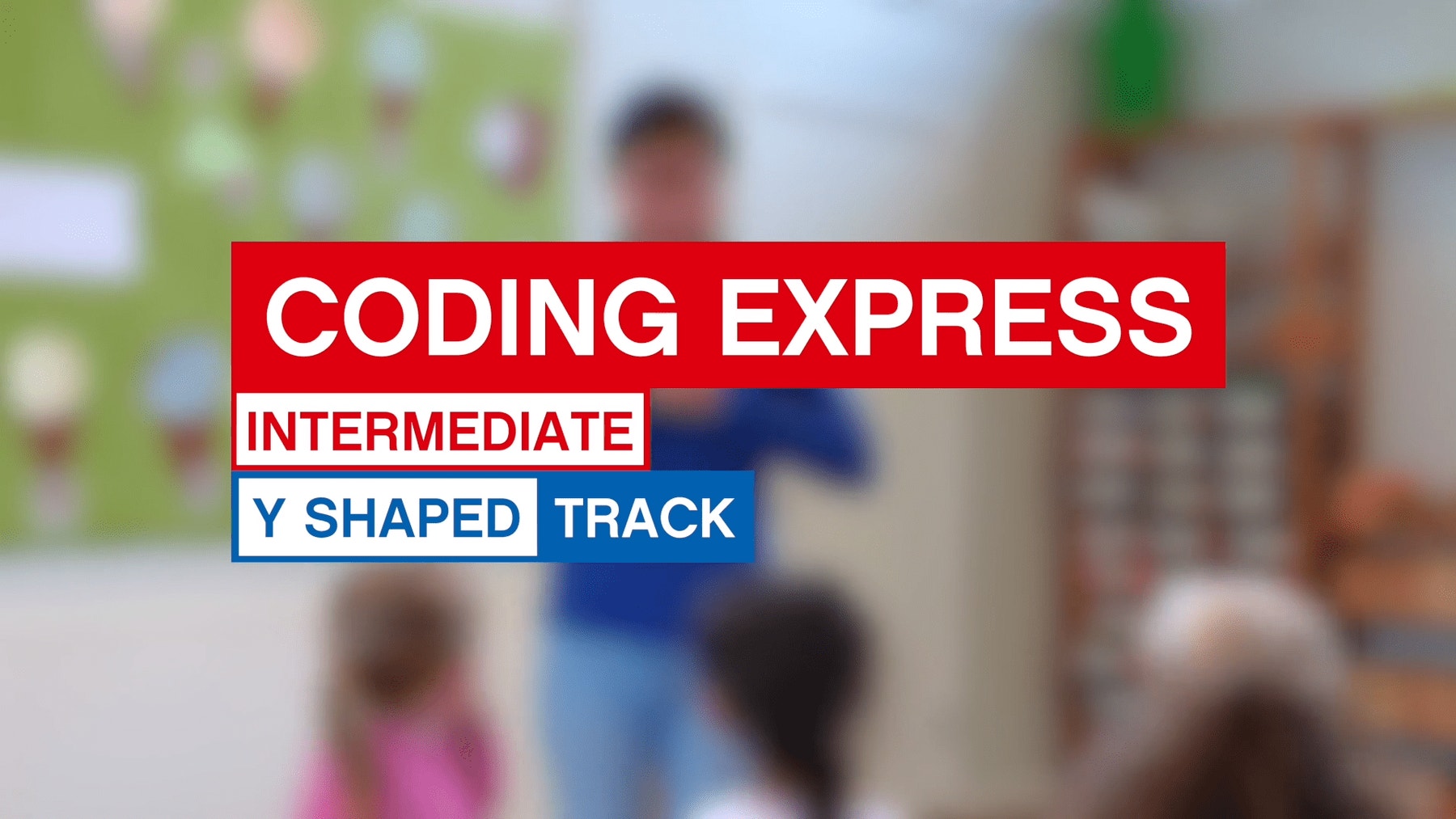Y-Shaped Track - Conditional Statements
In this lesson children will explore and und that the Y-shaped track provides options and be able to design and optimize solutions.

Engage

Tell the children that they’re going to play the “colored tickets game”Choose at least three spots around the classroom to be “train stops.”
Let the children help to name them after their favorite places (e.g., playground, amusement park).
Place different color bricks at each stop and use the same color bricks as “tickets.”
You can act as the conductor, giving the children tickets according to where they’d like to go.
As you hand out the tickets, introduce the use of if-then statements (e.g., if you have a red ticket, then you go to…).
Ask the children to walk to their destinations and check whether the brick’s color is same as their “ticket” color.
Explore
Now the children are going to build their own colored tickets game!
Show them the Y-shaped track and the track with a switch.
Ask them to build a similar Y-shaped track and at least two stops along the track (see sidebarfor an example).
Explain that they should use different color bricks to indicate the stops they’ve built; just like in the game they’ve just played.
Choose one child to be the conductor who passes out bricks to be used as “train tickets.”

Explain
Tell the children that trains give signals to indicate where they want to go.
Explain that this isn’t much different from how they’ve just used colored tickets to tell where they wanted to go.
Talk to the children about how trains give signals.
Ask questions like:
- What signals can trains give? (Make a “choo choo” sound.)
- Can trains give signals without making sounds? (e.g., by flashing their lights, giving a color signal, or by how they’re decorated)
- Which type of signal do you think is best? Why?

Elaborate
Encourage the children to use both track switches to build a three-ended or Q-shaped track.
Talk about the logistics of running a train on this type of track.
Ask questions like:
- How will you give signals now that you’ll have more destinations?
- How will you help the train to go back and visit other stops? (By using the green action brick.)
Evaluate
Evaluate the children’s skills development by observing if they’re:
- Asking questions about concepts related to science and technology
- Observing and describe objects and events
- Identifying cause and effect relationships
Öğretmen Desteği
Children will:
- Understand that the Y-shaped track provides options
- Design and optimize solutions
- Be able to compare different train track shapes and their uses (i.e., sequencing, looping and conditional statements)
For up to six children
Coding Express set (45025)
Each lesson has been developed using the science, math and technology guidelines from the National Association for the Education of Young Children (NAEYC), the 21st Century Early Learning framework (P21) and Head Start Early Learning Outcomes Framework.
The learning goals listed at the end of each lesson can be used to determine whether or not each child is developing the relevant early math skills. These bullet points target specific skills or pieces of information that are practiced or presented during each lesson.